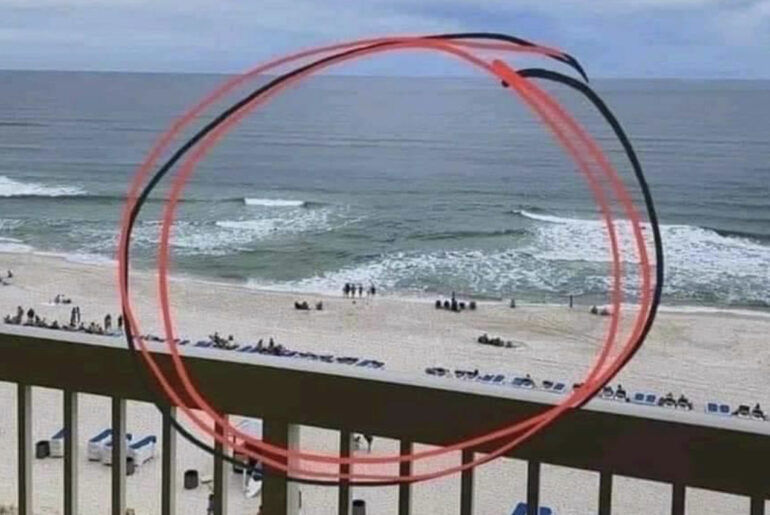Having a lack of knowledge about the ocean’s regulations and the workings of the sea can turn a day at the beach into a disastrous experience. Particularly, the presence of perilous rip currents can pose a significant threat to individuals who are uninformed. Therefore, if you intend to spend a day at the beach, it is crucial to familiarize yourself with how to identify rip currents and understand the appropriate actions to take if you become caught in one.
What leads to the formation of rip currents?
Rip currents emerge as forceful and narrow streams of water that move away from the coastline. Their strong force has the potential to pull even the most proficient swimmers to great distances in the open sea. While they may be challenging to detect, having knowledge of their characteristics enables you to identify and steer clear of them, ensuring your safety while in the water.
The formation of rip currents usually arises from a convergence of elements, encompassing waves, wind, and the configuration of the coastline. They tend to occur more frequently on beaches featuring a sharp decline, where the waves break in close proximity to the shore. As waves break, they propel water towards the coastline, resulting in an accumulation that needs to flow back into the ocean. This is precisely when rip currents emerge, as the water rapidly retreats in a concentrated pathway towards the sea.
Identifying rip currents
Detecting rip currents can be challenging, but there are several indicators to watch out for. Firstly, observe the direction of the waves. Waves should be rolling towards the beach and breaking near the shoreline, characterized by a foamy, white crest. A rip current often appears as a deceptively calm area along the coast, contrasting with the surrounding water. For individuals less familiar with the ocean, it may mistakenly appear as an ideal, wave-free spot to enter the water. Additionally, it may disrupt the wave pattern, where the water fails to break as expected. These signs frequently suggest the presence of a rip current.

It is crucial to avoid entering the ocean in areas where currents are forming in this manner. It is of utmost importance to stay away from such zones due to the high risk associated with rip currents. These currents possess the capability to drag even the most proficient swimmers far into the sea, and they are formidable to swim against. Furthermore, it becomes exceptionally challenging for someone to rescue individuals trapped in these currents, as they would also become ensnared in the relentless flow.
How to proceed if you become entangled in a rip current
In the event that you become caught in a rip current, maintaining a calm demeanor is crucial. It is not advisable to resist the current, as it will only lead to exhaustion. Instead, swim parallel to the shore, aligning your movements with the current until you are outside of its influence. Once you have successfully escaped the current, you can swim back to the shoreline. It is essential to note that you do not need to possess strong swimming abilities to overcome a rip current. By floating on your back and using your hands to paddle, you can expedite your return to the shore. After freeing yourself from the rip current, you may feel quite fatigued. In such circumstances, it is advisable to float on your back instead of attempting to swim towards the shore, allowing the natural motion of the waves to propel you towards the beach.
Differentiating Rip Currents from Rip Tides and Undertows
It is crucial to bear in mind that rip currents are distinct from rip tides and undertows. Rip tides are influenced by the gravitational forces exerted by the moon and sun and are unrelated to waves or wind. They manifest as forceful currents resulting from the tide drawing water through an inlet along a barrier beach. When the tide recedes, there is a robust water flow through the inlet, directing it towards the ocean. These phenomena are exceedingly hazardous and challenging to anticipate unless one possesses knowledge about tides and tidal movements.
Undertows occur when water retreats back into the ocean after a wave crashes and are generally less forceful than rip currents. When large waves break on the beach, they create a significant surge and backflow of water and sand. This mixture of water and sand flows back towards the ocean and is pulled into the succeeding breaking wave. If caught in an undertow, it may feel like you are being pulled underwater as the wave crashes above you. While you may be tossed around by the wave, the undertow doesn’t typically drag you out to sea and is generally less perilous for adults. However, it can pose a danger to children who lack the strength to navigate against the pulling force of the water when attempting to walk back up the beach.
In summary
Having the ability to recognize rip currents and knowing how to respond if caught in one can ensure your safety while in the water, despite their inherent dangers. It is vital to maintain constant awareness of your surroundings and never swim alone. If you are not a proficient swimmer, it is advisable to avoid beaches with sizable waves and consider wearing a life jacket while in the water. Additionally, be attentive to signs indicating the presence of common rip currents or rip tides, as well as beaches notorious for strong undertows. If red flags are displayed at the beach, it is best to refrain from entering the water. By equipping yourself with a bit of knowledge and taking necessary precautions, you can relish a worry-free day at the beach.




